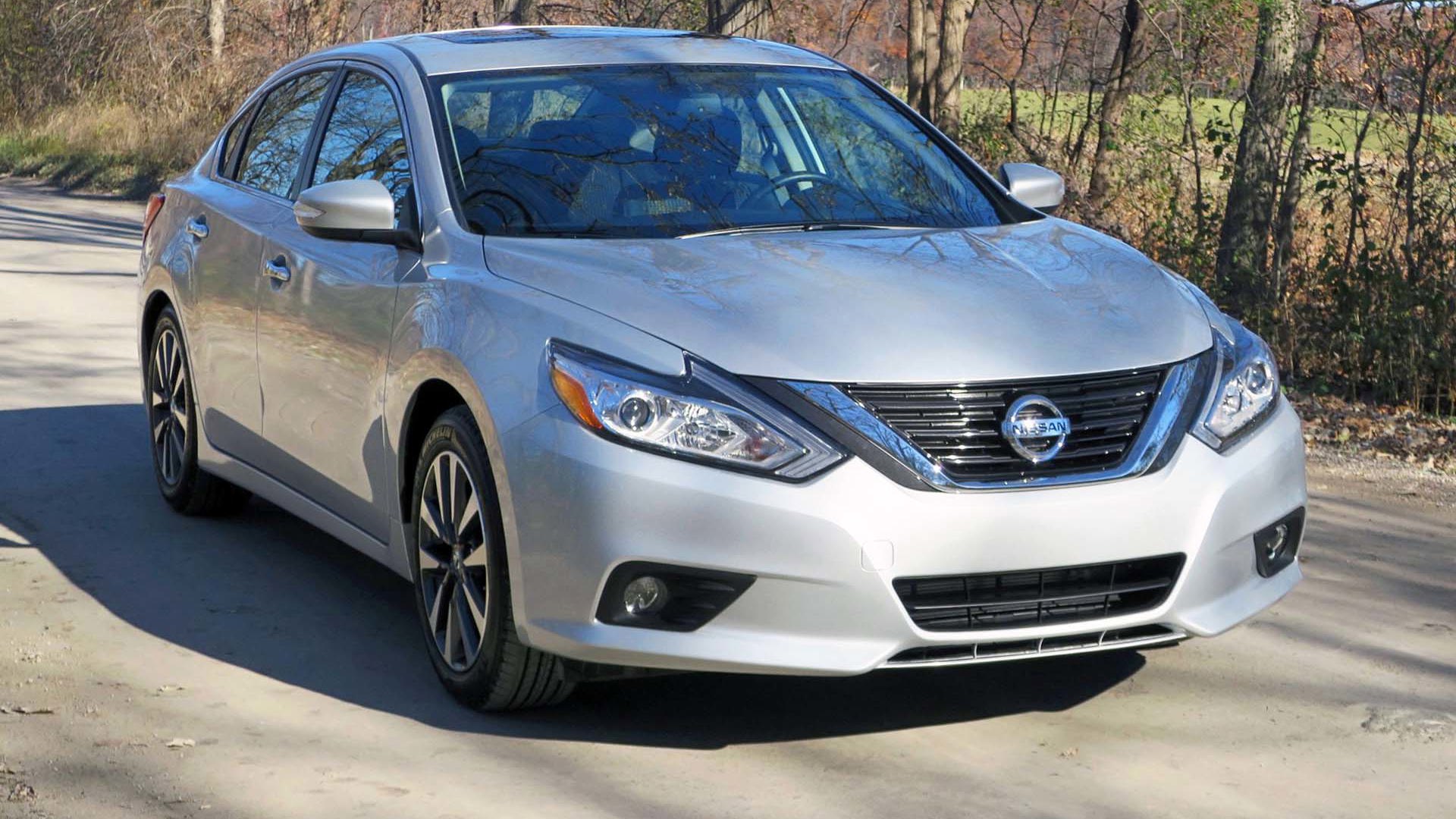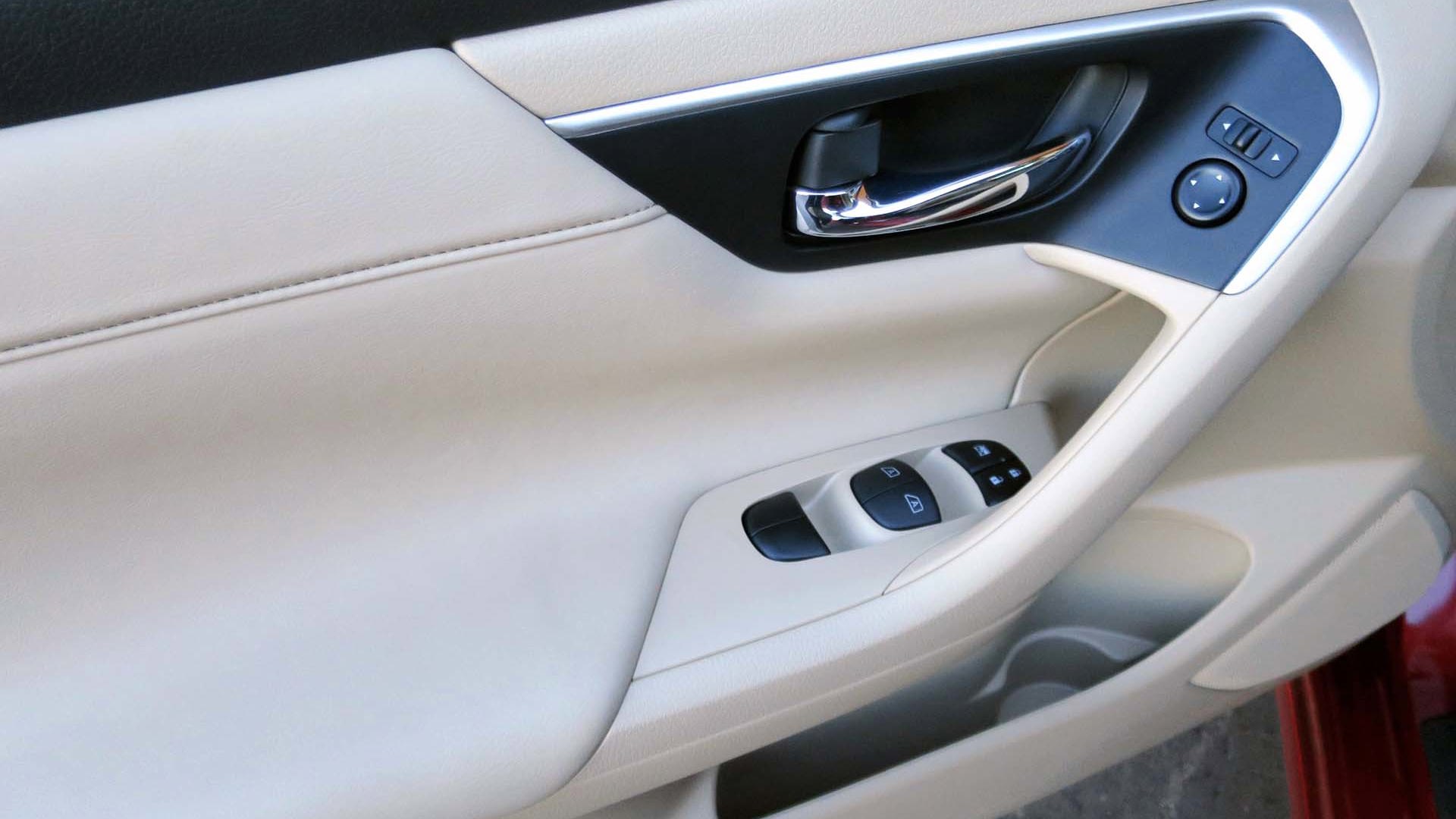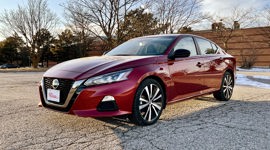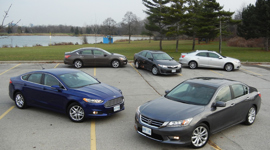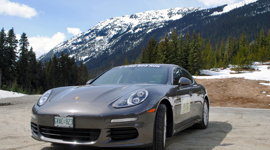Detroit, Michigan – Ahh, Detroit in November. Blue skies, 22-degrees Celsius, sunblock, golf, relaxing on the patio. It's enough to give global warming a good name!
It starts with the appearance, and pretty much a new front end from the windshield forward...
And we wondered why Nissan chose Detroit for its launch of the 2016 Altima...
Coincidentally, we're told, Detroit's the location of the company's North American Technical Centre, where 1,200 employees work and where the new Altima was developed. But the choice of location was apparently down to the less interesting “logistics.”
It's not an all-new Altima, however. It's a “mid-cycle refresh” which means we're about halfway through the current generation Altima, and time for some updates. In the case of this model, the updates are considerable.
It starts with the appearance, and pretty much a new front end from the windshield forward (actually, the windshield's also new, as it's now made of acoustic laminated glass). The most visible change is the grille, which is smaller and better integrated between the new headlights. Called “V-Motion” by Nissan, it's the same grille design used in the latest Maxima sedan and Murano crossover. It'll eventually find its way to the front of all Nissan cars and SUVs.
The new-look headlights are accented by a “boomerang” shaped daytime running lights, and Altima also receives redesigned fenders, bumper and hood, giving it a somewhat sleeker and lower appearance. The boomerang theme is echoed in the redesigned rear lights and is also found inside the car (on the doors). There's a new rear trunk lid and bumper to complement the lights.
At the side, Altima receives new 17- and 18-inch alloy wheels, and a unique 18-inch wheel for the sport-trim SR model (the entry level model is fitted with 16-inch steel wheels with covers).
So, there's a lot that's different on the outside and there are some differences inside. A new steering wheel, a redesigned centre stack, new trim for the dashboard to emphasize width, and some aluminum-look and piano black features enhance the cabin. Siri Hands-Free is available, too (although not the full Apple CarPlay system or Android Auto). The mid-range SV model has a power driver's seat, but a manual passenger seat, a cost-saving measure presumably.
The suspension is tuned for a more stable ride and the steering is altered for a sharper, more responsive feel. A new choice of tires improves braking performance by a surprising 10 percent and underbody panels make the car more aerodynamic (and hence more fuel efficient).
Under the hood, the drivetrain carries over, although the 2.5L four-cylinder engine becomes more fuel efficient. Making 179 hp at 6,000 rpm and 180 lb-ft of torque at 4,000 rpm, it now returns 8.7/6.0/7.5 L/100 km city/highway/combined using regular grade fuel. A 3.5L V6 making 270 hp at 6,400 rpm and 251 lb-ft torque at 4,400 rpm is also available and likewise uses regular grade fuel. Its fuel consumption numbers are not yet calculated but should not exceed the equivalent 2015 model (presumably similar to the outgoing model). But with a generous 71.9 L gas tank, your range will be considerable regardless of the engine.
The “automatic” transmission is of the continuously variable type (CVT) and – just so you know – there is no manual transmission option for any trim level; as one executive pointed out: “We have to build what people want, and we are getting to the point that most customers simply don't know how to shift manually.” The transmission has been recalibrated this year to create a “more responsive acceleration feel” from a standing start and when passing.
There are six trim levels starting with the base 2.5, then moving up the ladder to the 2.5 S, 2.5 SR, 2.5 SV (with available navigation and moon roof), 2.5 SL Tech and 3.5 SL Tech. Note that the V6 is only available as an SL Tech model and the SR is not available with navigation and/or moonroof.
For those desiring the latest convenience and “active safety” features, the 2016 Altima offers several. Blind Spot Warning and Cross Traffic Alert are standard on the SV and SL models, with Forward Collision Warning, Forward Emergency Braking and Predictive Forward Collision Alert standard on SL models. The latter is notable because the radar system not only monitors the behaviour of the vehicle directly ahead, it also scans two vehicles ahead. Intelligent Cruise Control is also present on the top-level SL Tech model and a rearview camera is standard on all but the base 2.5 Altima.
Nissan's done a good job improving the Altima's handling and ride. This is the best-handling Altima I've ever driven, with little body roll in the corners and good stability on uneven surfaces. It's not a sports sedan but its dynamics are satisfying. Additionally, the ride is super-quiet and smooth, with additional and thicker new insulation and the acoustic windshield effectively keeping outside noise where it belongs.
The car's so quiet, however, that the objectionable sound of the CVT gearbox is more evident. It also sends low-frequency vibration through the car when operating under light throttle on occasion (you feel it in the armrest between the front seats and in the dashboard, for example). It's not intrusive, but it's noticeable. Nissan's got some of the best CVT technology on the market and perhaps if it's all you know, its operation won't bother you at all. For those of us used to the satisfying sequence of one gear predictably shifting into the next, CVTs are less appealing.
The SR model, by the way, gets a paddle-shiftable version, calibrated with set ratios to simulate actual gears. I don't think many people actually use paddle shifters, but it's a sporty touch. We drove both the SV and SR on a short handling course and found the SR flatter in the corners and smoother on the slalom. It boasts a 20-percent reduction in body roll due to its bigger, stiffer stabilizer bars and tuned dampers. While the difference was certainly evident, I didn't find it dramatic (which, you could argue, speaks to the good job Nissan's done on the full lineup). However, both models made the available Toyota Camry – a sacrificial lamb, I guess – feel softly sprung and flustered on this course.
Competition is strong in the midsize sedan segment, which Nissan says is the fourth largest segment in Canada behind compact cars, CUV/SUVs and pickup trucks. For 2015 the top seller was the Ford Fusion, followed by the Honda Accord, Toyota Camry, Hyundai Sonata and the surging Chrysler 200. The Nissan Altima was ranked sixth, with obvious room for improvement.
As mid-cycle refreshes go, therefore, this one's more than a minor effort. The 2016 Nissan Altima is competent and credible choice for midsize car buyers. Its appearance is significantly changed, it handles better, delivers improved fuel economy and is fitted with a range of new convenience and safety features. Some of the packaging choices seem a little odd (why can't you get navigation on the SR?) but one expects Altima will give good value for the price, if only we knew what that was! Late December, we're told, so stay tuned, though we expect it to stay roughly within its current $24K–$35K range.
Oh, and the Altima's air conditioner works great, as we learned on a peculiarly balmy day in Detroit.



